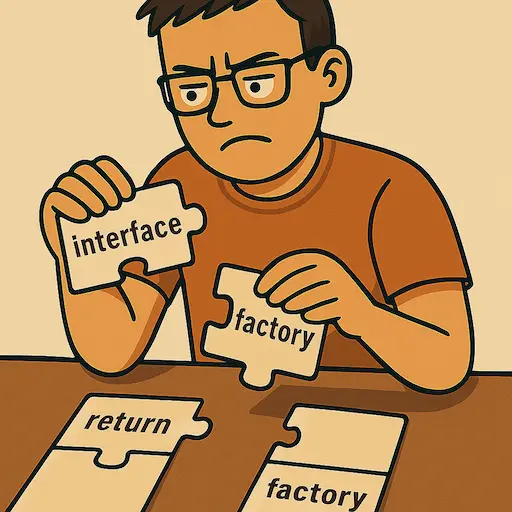You renamed a method, moved three files into a new folder, and squashed a 200-line switch statement into six nearly identical strategy classes. You even updated the JIRA ticket. Congratulations — the mess is now modular.
But let’s be clear: that wasn’t refactoring. That was furniture rearrangement. The smell is still in the room.

When ‘refactoring’ really just means rearranging the mess into a new, equally confusing shape.
The Illusion of Progress
Refactoring is meant to improve the internal structure of code without changing its behavior. In theory. In practice, it’s often used as a polite label for “I touched some stuff and now it looks different.”
We had a class that handled user access logic — ugly, yes, but it worked. A bright dev came in and “refactored” it by abstracting the entire thing across six new classes, a factory, and two interfaces. Everything was still wired to the same decisions, just now buried under layers. Following the flow meant bouncing through so many files you’d miss the one divergent path that actually mattered — and end up circling in your IDE like you were debugging your own memory.
It looked productive. The diff was huge. The ticket was marked “done.” The codebase, however, had just inherited a new layer of indirection — and zero actual clarity.
You Might Be Moving Code Around If…
- You renamed
UserHandlertoUserProcessorand felt accomplished - You split a 300-line method into five methods — and named them
step1()throughstep5() - You created a new service that delegates to another service that calls the original method
- You introduced an interface with one implementation — your own
- You deleted comments and replaced them with method names that still don’t help
None of these are capital crimes. But if the net result is more files, more friction, and the same confusion — then it wasn’t a refactor. It was a reshuffle.
What Real Refactoring Actually Feels Like
Good refactoring doesn’t just move logic — it reduces effort. It makes the next change easier, the intent clearer, and the code less fragile.
Some signs you actually improved something:
- You deleted more lines than you added
- Someone new can follow the logic without asking
- The next feature becomes easier to write
- The weird workaround you left six months ago is gone
- It’s easier to test — or no longer needs a test to explain it
The best refactors aren’t always dramatic. Sometimes it’s just renaming a variable so the next person doesn’t swear at it. Sometimes it’s deleting dead logic you’ve been side-eying since 2021.
Refactor Less. Clarify More.
Refactoring is editing. It’s not decoration. It’s not movement for movement’s sake.
Before your next “refactor,” ask yourself: Did this change reduce confusion? Or just reshuffle it?
If the answer makes you pause, good. That’s the point.